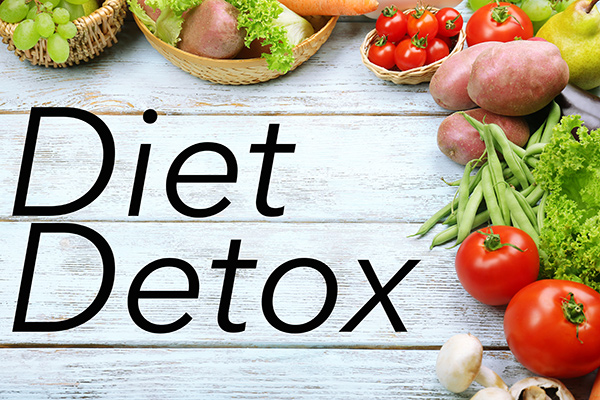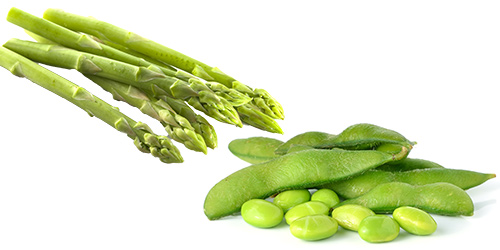Diet Detox: Do or Don’t?
Most people go on a fast when they want to “detox”. Then after a few days or a week, they go back to eating the same foods. Doesn’t it make more sense to consistently avoid toxins so that you don’t develop an excess burden that you feel you have to somehow undo?
Nutritional information specialized for athletes
is provided by registered dieticians
at Sansum Clinic of Santa Barbara.
It would be nice to eliminate all toxins from your diet, but it would also be impossible. The best we can do, and the most we can expect of ourselves, is to reduce our toxic load by minimizing exposure to as many chemicals as possible.
Detoxification should mean reducing your intake of chemicals on a regular basis, as well as eating more of the foods and nutrients that have potential to help facilitate the detoxification process. What you do over the long run is more significant and has a greater impact on your health than what you might do for a few days or weeks per year.
The first step is to know what you are eating. Conventionally raised beef, pork, poultry and eggs contain antibiotic residues, hormones used to increase growth, herbicides and pesticides from the animal feed. Limit your consumption and/or buy organic, without antibiotics or growth hormone. If you want to go one step further buy “grass fed” or “pasture fed”.
Fish, whether wild-caught or farmed, contains mercury, a heavy metal; PCP, a carcinogen; DDT, a carcinogen; and antibiotic residues (if farm-raised). Despite the contaminants listed, the health benefits of eating fish far outweigh the risks, as long as you choose wisely. Large predatory fish and those that have long life spans begin to accumulate methyl-mercury. This being the case, it is best to avoid those fish that are high up on the food chain (shark, swordfish, tilefish, king, mackerel), and choose the lower mercury fish most often. More information can be found on the U.S. Food and Drug Administration website http://www.fda.gov.
Conventionally grown produce contains herbicides, pesticides and xenoestrogens (man-made chemicals that mimic the effects of estrogen). Eat your fruits and veggies, but buy organic varieties when possible. If you can’t find or afford all organic produce, know that some fruits and vegetables have significantly more pesticide residue than others. Limiting consumption of the most toxic produce can help. The “dirty dozen” include: apples, bell peppers, carrots, celery, cherries, imported grapes, kale, lettuce, peaches, potatoes, strawberries and domestic blueberries.
The good news is that our bodies are designed to resist damage from toxins. We have built-in detoxification systems. The lungs, kidneys, colon, liver, skin, blood and lymph all assist with elimination of waste. The liver is the detox “powerhouse” of the body. Eating more whole foods and avoiding/limiting refined, processed foods can decrease the load of toxins the liver must process.
Certain foods contain nutrients that enhance the liver’s ability to clear toxins from the body. The following are some of the top “detox” foods: garlic, onions, cruciferous vegetables, whole grains, turmeric, berries, green tea, yogurt, soy, legumes, nuts, seeds and red grapes.
Adequate protein is also essential in the detoxification process. Whey is included in some detox diets as it is high in the amino acid L-cysteine, which your body converts into glutathione. Your liver uses glutathione for cleansing; therefore, replenishing glutathione every day is useful for a detox program. In addition to L-cysteine, whey contains other beneficial substances for the liver, including the amino acids glutamine, glycine, taurine and methionine.
Make a point to eat more red, yellow, orange and green. Get more fiber and adequate protein in your diet. Be sure to drink enough fluid to keeping everything moving through as it should. Incorporating “detox” food into your diet can be nutritious and delicious. The following recipe is quick, easy and loaded with phytonutrients, fiber and protein.
By Kristen Price, RD, Cancer Center of Santa Barbara with Sansum Clinic
SUGGESTED RECIPE: Asparagus-Edamame Salad – yields 6 servings
Asparagus and Edamame are the foundation of an easy salad to make that is loaded with phytonutrients, fiber and protein.
1 lb. medium asparagus, ends discarded
1 (16-oz.) package frozen edamame (green soy beans), defrosted and drained
2 Tbsp. olive oil, divided
¼ lb. arugula (or ½ arugula and ½ watercress)
¼ cup shredded parmesan
2 tsp. balsamic vinegar
Salt and pepper to tasteCut asparagus stalks into ¼-inch diagonal slices, separating tips. In a wok or large sauté pan, stir-fry asparagus stalks in 1 tablespoon olive oil over medium heat until slightly browned. Add tips and continue to stir-fry for another 4-5 minutes. Remove from heat and toss with defrosted edamame, salt and pepper. Pile arugula (or arugula and watercress) in a salad bowl and toss with remaining Tbsp. olive oil. Top with asparagus and edamame, and sprinkle with shredded parmesan. Drizzle with balsamic vinegar and serve immediately.
More Sansum Nutritional Information for Athletes



